BIOL 3301: Ch 9 Molecular Structure of DNA and RNA
1/34
There's no tags or description
Looks like no tags are added yet.
Name | Mastery | Learn | Test | Matching | Spaced |
|---|
No study sessions yet.
35 Terms
molecular genetics
study of DNA structure and function at the molecular level
our knowledge of genetic mechanisms comes from our knowledge of the molecular structure of DNA and RNA
genetic material
must meet the following criteria
information
contain necessary info to make entire organism
transmission
be passed from parent→offspring
replication
copied to be passed from parent→offspring
variation
can change to account for the known phenotypic variation in each species
Frederick Griffith
? studied a bacterium (pneumococci) now known as streptococcus pneumoniae
2 strains
type S→ Smooth
polysaccharide capsule
protect bacterium from immune system of animals
smooth colonies on solid media
type R→ Rough
no capsule
colonies with rough appearance
type S pneumoniae
secrete a polysaccharide capsule
protects a bacterium from the immune system of animals
produce smooth colonies on solid media
type R pneumoniae
unable to secrete a capsule
produce colonies with a rough appearance
live type S
mouse died and type S bacteria recovered from the mouse’s blood

live type R
mouse survived and no living bacteria isolated from the mouse’s blood (2)

heat killed type S
mouse survived and no living bacteria isolated from the mouse’s blood (3)

live type R + heat killed type S clls
mouse died and type S bacteria recovered from the mouse’s blood
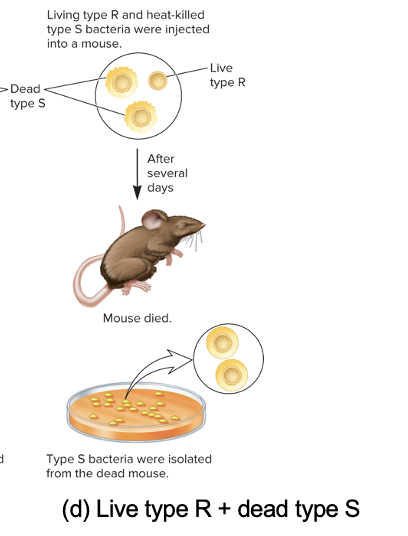
transforming principle
Griffith concluded that something from the dead type S bacteria was transforming type R bacteria → type S
transformation
the substance that allowed this to happen was the ?
griffith didn’t know what type of substance it was
capsule
the formation of a ? by these bacteria fulfilled the 4 required properties of “genetic material”
transformed bacteria acquired information to make the
variation exists in the ability to make a ?
info required to create a ? is replicated and transmitted from mother→ daughter cells
avery, macleod, mccarty experiments
prepared cell extracts from type S cells and purified each type of macromolecule
only the extract that contained purified DNA was able to convert type R bacteria→ type S
treatment of the DNA extract with RNase or protease did not eliminate transformation
treatment with DNase did
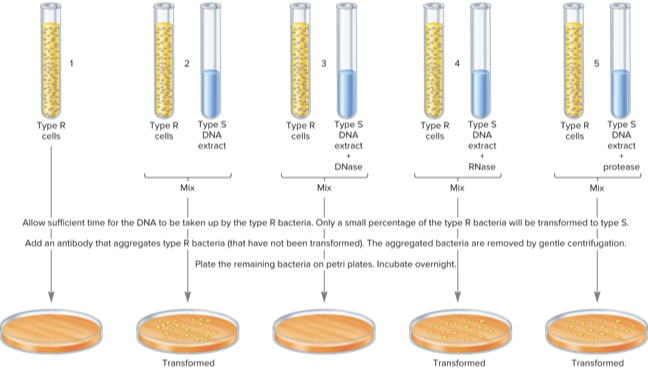
nucleic acids
DNA and molecular cousin RNA are known as nucleic acids
first ID’ed by Friedrich Miescher in 1869 in waste surgical bandages
named substance “nuclein”
material from cell nucleus
later research shoed DNA and RNA release H+ in water and therefore are acids
became named ?
levels of nucleic acid structure
nucleotides→ single strand→ double helix→ 3D structure
DNA and RNA are large macromolecules with several levels of complexity
nucleotides
form repeating unit of nucleic acids
linear strand of DNA or RNA
nucleotides linked
double helix
in DNA, 2 strands can interact to form
3D DNA structure
folding and bending of the double helix
interaction f DNA with proteins produces chromosomes within living cells
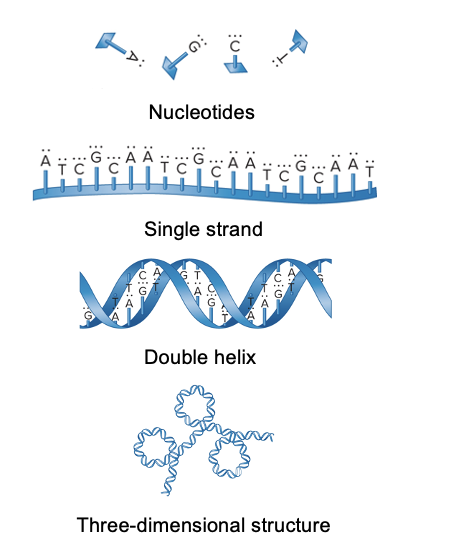
nucleotides
repeating structural unit of DNA and RNA
3 components
phosphate group
pentose sugar
ribose in RNA
deoxyribose in DNA
a nitrogenous (nitrogen containing) base
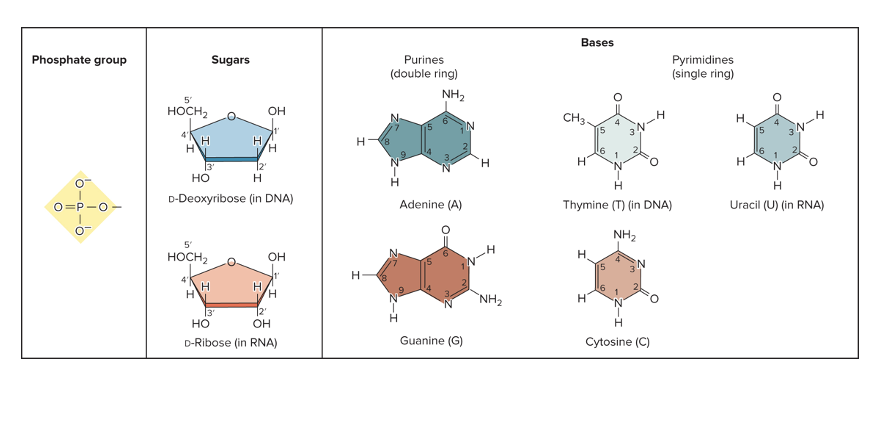
linear strand
nucleotides are linked to form ? of RNA or DNA
double helix
in DNA, 2 strands can interact to form a ?
3D DNA structure
results from folding and bending of the double helix
interaction of DNA with proteins produces chromosomes within living cells
2’ carbon of sugar
main difference btw DNA vs RNA nucleotides
DNA
sugar deoxyribose has H @ ?
RNA
sugar ribose has OH @ ?
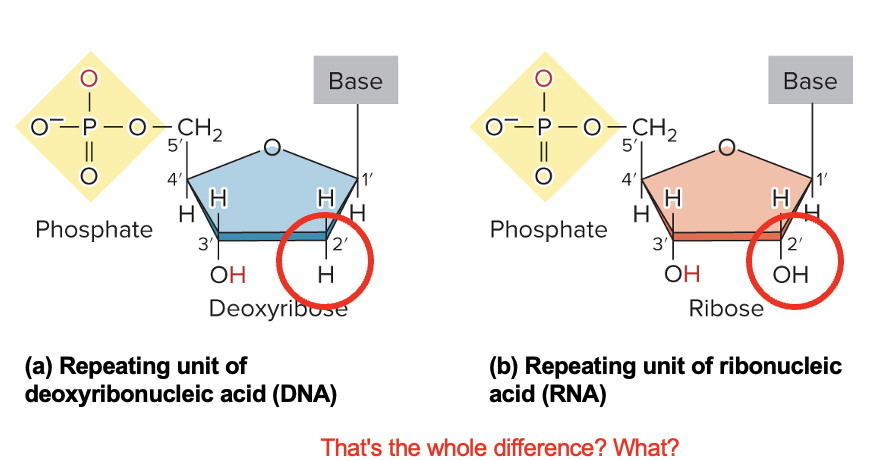
nucleoside
base + sugar
ex.,
adenine + ribose = adenosine
adenine + deoxyribose = deoxyadenosine
nucleotide
base + sugar + phosphate(s)
ex.,
adenosine monophosphate (AMP)
adenosine diphosphate (ADP)
adenosine triphosphate (ATP)
covalent/ester bonds
in DNA, nucleotides are linked together by ?

phosphodiester linkage
a phosphate connects the 5’ carbon of one nucleotide to the 3’ carbon of an adjacent nucleotide
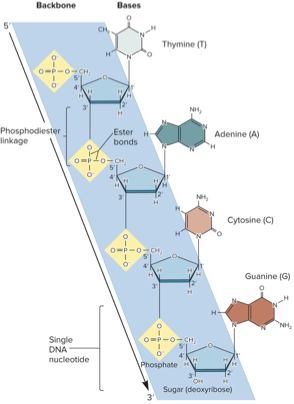
5’ to 3’
a DNA strand has ? directionality
in a strand, all sugar molecules are oriented in the same direction

backbone
the phosphates and sugar molecules form the ? of the nucleic acid strand
the bases project from the backbone
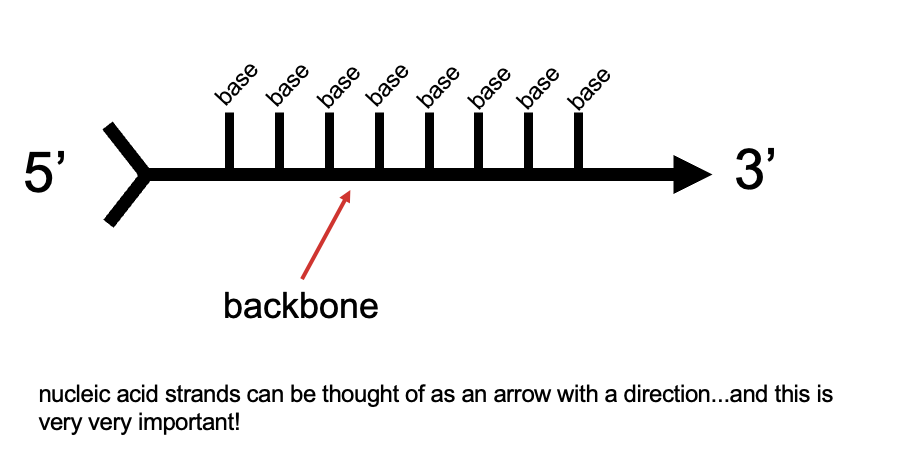
double helix
in 1953, James Watson and Francis Crick elucidated the ? structure of DNA
the scientific framework for their breakthrough was provided by other scientists
Linus Pauling
Rosalind Franklin and Maurice Wilkins
Erwin Chargaff
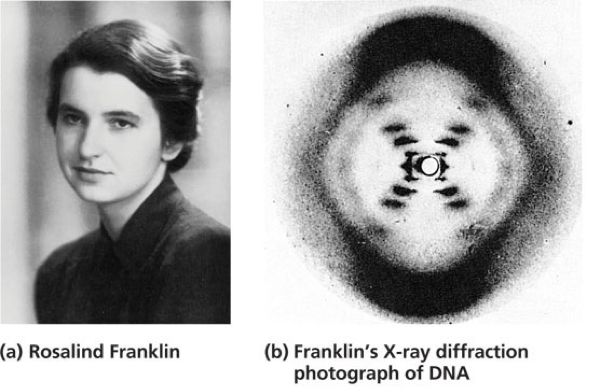
erwin chargaff
pioneered biochemical techniques for isolation, purification, and measurement of nucleic acids from living cells
it was known that DNA contained 4 bases: A,G,C,T
He analyzed the base composition of DNA isolated from many different species
% adenine = % thymine
% cytosine = % guanine
? ‘s rule was crucial for Watson and Crick to elucidate DNA structure
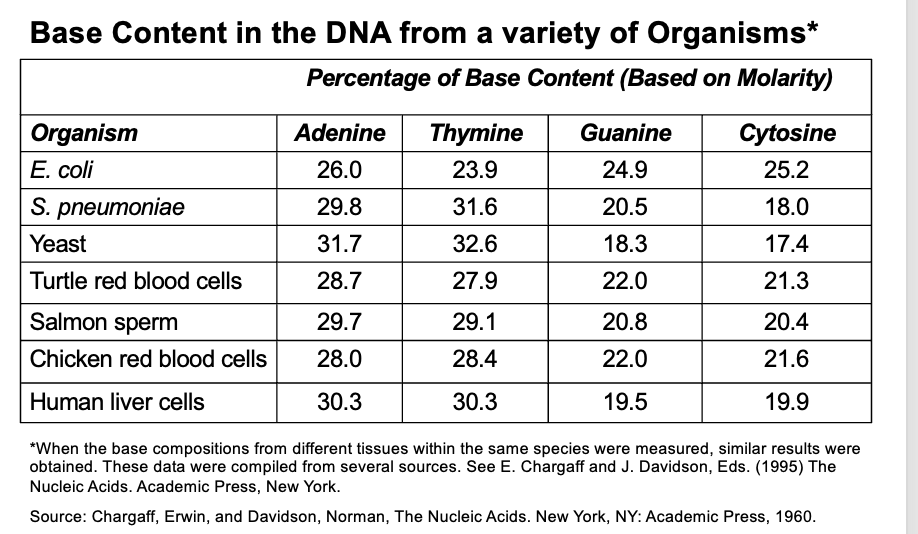
chargaff’s rule
analyzed base composition of DNA isolated from many species
% adenine = % thymine
% cytosine = % guanine
was crucial for Watson and Crick to elucidate DNA structure
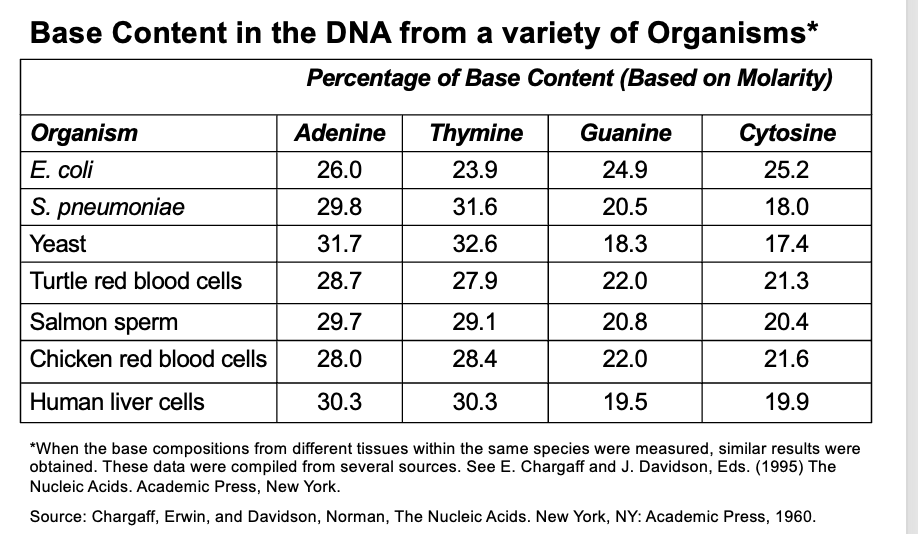
double helix stabilization
? is stabilized by hydrogen bonding btw complementary bases
A bonded to T by 2 hydrogen bonds
C bonded to G by 3 hydrogen bonds
base stacking
within the DNA, the bases are oriented so that the flattened regions face each other
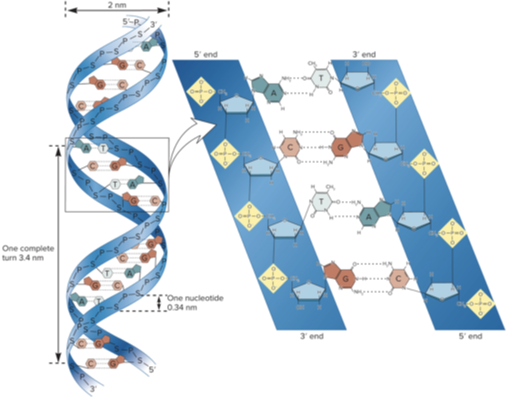
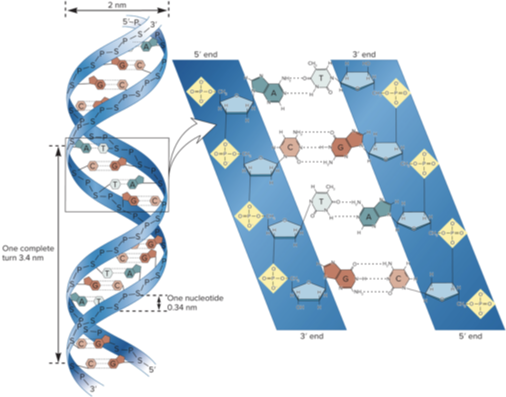
base stacking
within the DNA, the bases are oriented so that the flattened regions face each other
minimizes the exposure of the hydrophobic (water-repelling) parts of the nitrogenous bases to water.
excludes water molecules from the interior of the helix
grooves
there are 2 asymmetrical ? on the outside of DNA double helix
major ?
minor ?
certain proteins can bind within these ?
they can thus interact with a particular sequence of bases

DNA
A=T
C=G
double stranded, antiparallel, complementary
RNA
uracil as a base (instead of thymine)
ribose sugar with 2’ OH (instead of deoxyribose with 2’ H)
strands are typically 100s-1000s nucleotides in length
in ? synthesis, only 1 of the 2 DNA strands is used as a template
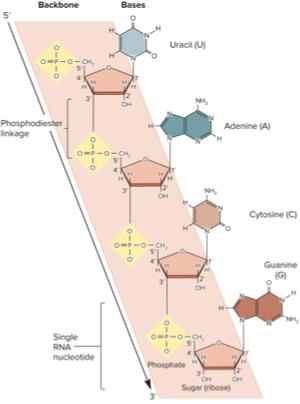
RNA structure
although usually, single stranded ? molecules can form short, double stranded regions
this secondary structure is due to complementary base pairing
A to U
C to G
allows short regions to form double helix
different types of ? secondary structures are possible
